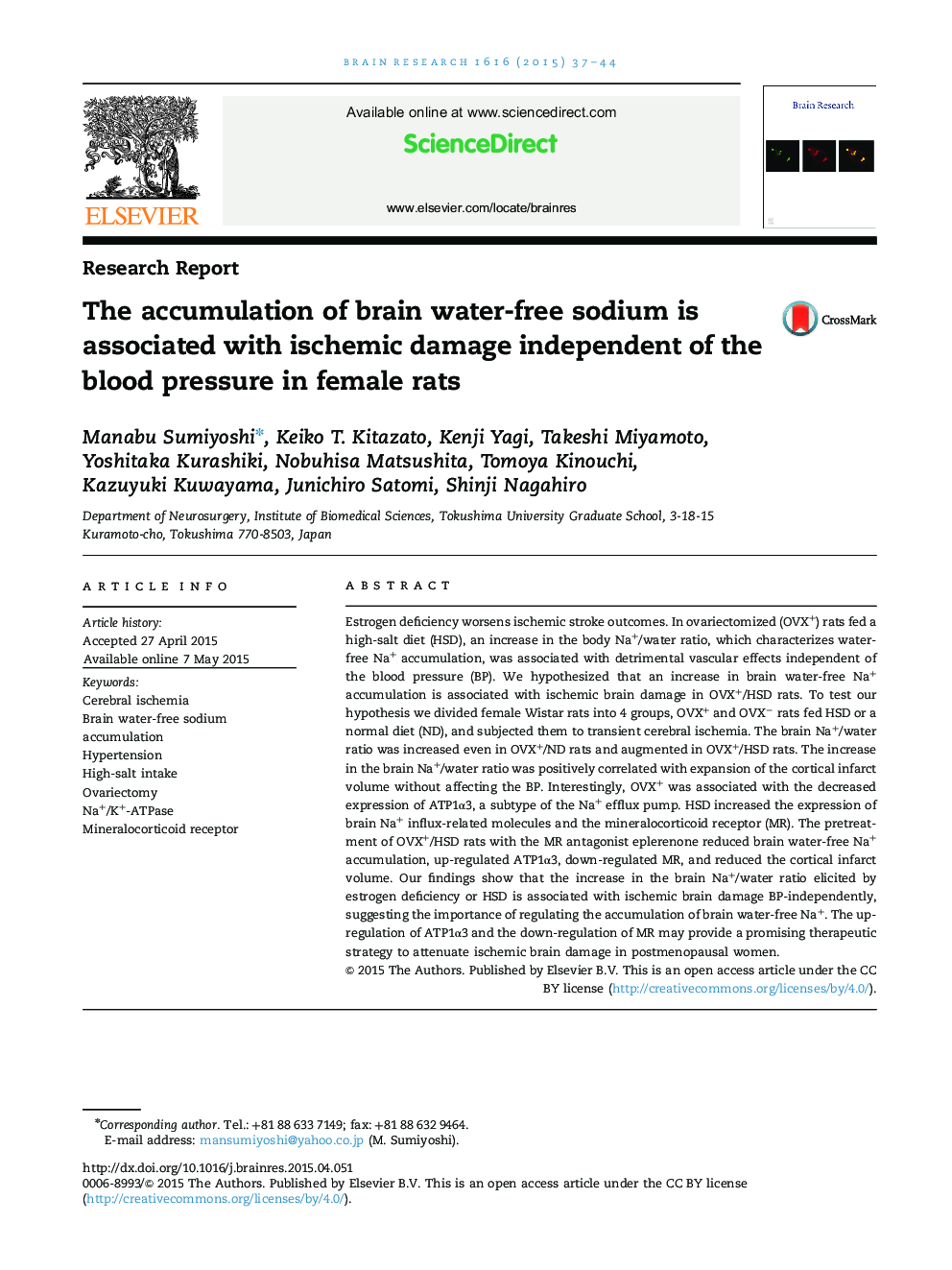| Article ID | Journal | Published Year | Pages | File Type |
|---|---|---|---|---|
| 6263013 | Brain Research | 2015 | 8 Pages |
â¢We examine the relation between brain water-free Na+ accumulation and ischemia.â¢Both high-salt intake and estrogen deficiency accumulate brain water-free Na+.â¢In female rats, brain water-free Na+ accumulation worsens ischemic brain damage.â¢Na+ accumulation does not necessarily have effects on blood pressure in female rats.â¢Eplerenone reduces both brain water-free Na+ accumulation and ischemic brain damage.
Estrogen deficiency worsens ischemic stroke outcomes. In ovariectomized (OVX+) rats fed a high-salt diet (HSD), an increase in the body Na+/water ratio, which characterizes water-free Na+ accumulation, was associated with detrimental vascular effects independent of the blood pressure (BP). We hypothesized that an increase in brain water-free Na+ accumulation is associated with ischemic brain damage in OVX+/HSD rats. To test our hypothesis we divided female Wistar rats into 4 groups, OVX+ and OVXâ rats fed HSD or a normal diet (ND), and subjected them to transient cerebral ischemia. The brain Na+/water ratio was increased even in OVX+/ND rats and augmented in OVX+/HSD rats. The increase in the brain Na+/water ratio was positively correlated with expansion of the cortical infarct volume without affecting the BP. Interestingly, OVX+ was associated with the decreased expression of ATP1α3, a subtype of the Na+ efflux pump. HSD increased the expression of brain Na+ influx-related molecules and the mineralocorticoid receptor (MR). The pretreatment of OVX+/HSD rats with the MR antagonist eplerenone reduced brain water-free Na+ accumulation, up-regulated ATP1α3, down-regulated MR, and reduced the cortical infarct volume. Our findings show that the increase in the brain Na+/water ratio elicited by estrogen deficiency or HSD is associated with ischemic brain damage BP-independently, suggesting the importance of regulating the accumulation of brain water-free Na+. The up-regulation of ATP1α3 and the down-regulation of MR may provide a promising therapeutic strategy to attenuate ischemic brain damage in postmenopausal women.
